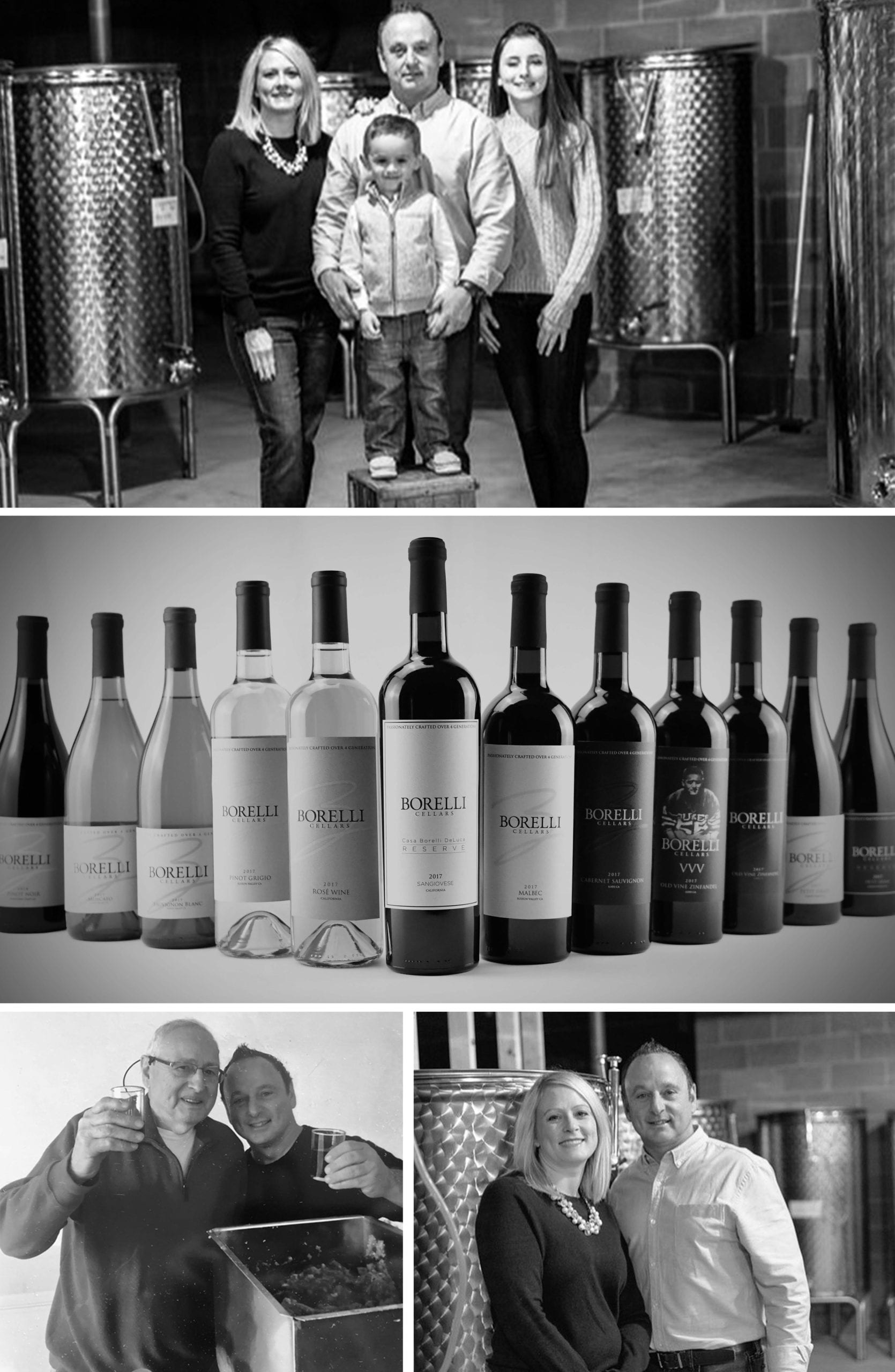A Borelli Family Tradition
More than a hundred years ago in the Campania and Tuscan regions of Italy, my grandfather, Pasquale Borelli, and great-grandfather, Enrico DeLuca, began making wine. They immigrated from Italy to the United States at the turn of the twentieth century bringing the tradition with them. In America, they continued making wine and passed their knowledge on to the next generations. As a child, I was blessed to be part of this tradition. Over the past thirty-five years, I have gathered with friends and family every grape harvest to celebrate and make new memories that I will cherish forever. I sincerely thank each and every one of them for being a part of this amazing journey!
“Fine wines that enrich the senses
and soul.”
History
In 2017, inspired by my passion and love of wine, I created Borelli Family Cellars so that I could begin to share my craft with you. Today we produce more than thirteen varietals of red and white wines from California’s Northern wine region.

Borelli’s Process
Craftsmanship
We specialize in small-batch handcrafted wines made of premium grapes from California’s northern wine region. Whether you are a newcomer or connoisseur, you will taste the difference in Borelli Cellars.
“From stainless tanks to oak barrels, we ensure our aging methods will produce the highest quality wines.”
Grapes
An exceptional glass of wine begins with the perfect grape. We frequently visit California’s wine region to hand-select and harvest grapes from preferred vineyard partners. When grapes reach the optimal sugar brix, they are hand picked and shipped to the winery.
Crushing / Destemming
Once the grapes reach the Winery they are ready to be processed. “Now the fun begins.” We use high quality stainless steel equipment from Italy to ensure the grapes are gently crushed and destemmed.
Primary Fermentation
During the fermentation process, cultured yeast is added, enabling natural sugars from the grapes to convert into alcohol. During this process we are frequently testing to ensure the fermentation is progressing.
Pressing
The grapes are gently pressed to remove any wine that is left in the skins.
Secondary Fermentation
Once the grapes have been pressed the wine will continue to ferment in stainless steel tanks and then racked off of the gross lees. A controlled malolactic fermentation is then started which will convert the harsher acids into lactic acid to give the wines a better mouth feel.
Racking
This is done throughout the aging process by separating the sediments from the wine.
Continued Aging
There are several different methods we use for aging our wines depending on the grape varietal and what flavor profiles we are trying to achieve.